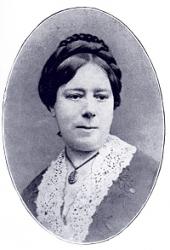- |
User Links
Comfort, comfort ye my people

Comfort, comfort ye my people
Author: Johann Olearius (1671); Translator: Catherine Winkworth (1862)Tune: GENEVAN 42
Scripture Songs
Published in 128 hymnals
Printable scores: PDF, MusicXMLPlayable presentation: Lyrics only, lyrics + musicAudio files: MIDI, Recording
Representative Text
1. Comfort, comfort ye my people,
Speak ye peace, thus saith our God.
Comfort those who sit in darkness,
Mourning neath their sorrows' load.
Speak ye to Jerusalem
Of the peace that waits for them,
Tell her that her sins I cover,
And her warfare now is over.
2. Yes, her sins our God will pardon,
Blotting out each dark misdeed;
All that well deserved his anger
He will no more see nor heed.
She hath suffered many a day,
Now her griefs have passed away;
God will change her pining sadness
Into ever-springing gladness.
3. For the herald's voice is crying
In the desert far and near,
Bidding all to true repentance,
Since the kingdom now is here.
Oh, that warning cry obey,
Now prepare for God a way;
Let the valleys rise to meet him,
And the hills bow down to greet him.
4. Make ye straight what long was crooked,
Make the rougher places plain;
Let your hearts be true and humble,
As befits His holy reign;
For the glory of the Lord
Now o'er earth is shed abroad,
And all flesh shall see the token
That his Word is never broken.
Source: Hymns and Devotions for Daily Worship #11
Author: Johann Olearius
Johannes Olearius (b. Halle, Germany, 1611; d. Weissenfels, Germany, 1684) Born into a family of Lutheran theologians, Olearius received his education at the University of Wittenberg and later taught theology there. He was ordained a Lutheran pastor and appointed court preacher to Duke August of Sachsen-Weissenfels in Halle and later to Duke Johann Adolph in Weissenfels. Olearius wrote a commentary on the entire Bible, published various devotional books, and produced a translation of the Imitatio Christi by Thomas a Kempis. In the history of church music Olearius is mainly remembered for his hymn collection, which was widely used in Lutheran churches. Bert Polman… Go to person page >Translator: Catherine Winkworth
 Catherine Winkworth (b. Holborn, London, England, 1827; d. Monnetier, Savoy, France, 1878) is well known for her English translations of German hymns; her translations were polished and yet remained close to the original. Educated initially by her mother, she lived with relatives in Dresden, Germany, in 1845, where she acquired her knowledge of German and interest in German hymnody. After residing near Manchester until 1862, she moved to Clifton, near Bristol. A pioneer in promoting women's rights, Winkworth put much of her energy into the encouragement of higher education for women. She translated a large number of German hymn texts from hymnals owned by a friend, Baron Bunsen. Though often altered, these translations continue to be used i… Go to person page >
Catherine Winkworth (b. Holborn, London, England, 1827; d. Monnetier, Savoy, France, 1878) is well known for her English translations of German hymns; her translations were polished and yet remained close to the original. Educated initially by her mother, she lived with relatives in Dresden, Germany, in 1845, where she acquired her knowledge of German and interest in German hymnody. After residing near Manchester until 1862, she moved to Clifton, near Bristol. A pioneer in promoting women's rights, Winkworth put much of her energy into the encouragement of higher education for women. She translated a large number of German hymn texts from hymnals owned by a friend, Baron Bunsen. Though often altered, these translations continue to be used i… Go to person page >Text Information
| First Line: | Comfort, comfort ye my people |
| German Title: | Tröstet, tröstet meine Lieben |
| Author: | Johann Olearius (1671) |
| Translator: | Catherine Winkworth (1862) |
| Meter: | 8.7.8.7.7.7.8.8 |
| Place of Origin: | Germany |
| Language: | English |
| Copyright: | Public Domain |
| Liturgical Use: | Scripture Songs |
English
- A Book of Chorales: And supplemental hymns #28
- A New Hymnal for Colleges and Schools #213
- Ambassador Hymnal: for Lutheran worship #15
- American Lutheran Hymnal #337
- Baptist Hymnal (1975 ed) #77
- Book of Hymns for the Evangelical Lutheran Joint Synod of Wisconsin and Other States #d51
- Book of Hymns for the joint Evangelical Lutheran Synod of Wisconsin, Minnesota, Michigan and other states #d47
- Breaking Bread (Vol. 39) #58
- Celebrating Grace Hymnal #89
- Chalice Hymnal #122 10 shown out of 97
Latin
Portuguese
Notes
Scripture References:
st. 1 = Isa. 40:1-2
st. 2 = Isa. 40:3-4
st. 3 = Isa. 40:3-5
This song is a versification of Isaiah 40:1-5, the passage that opens the final large group of prophecies in Isaiah 40-66. Many of these prophecies express consolation and hope that Judah's exile in Babylon is almost over. That is certainly the tone of 40: 1-5-words of comfort forecasting a new reign but also words that call for proper preparation–that is, repentance.
Johannes Olearius (b. Halle, Germany, 1611; d. Weissenfels, Germany, 1684) originally versified the passage in German in honor of Saint John the Baptist Day and published it in his Geistliche Singe-Kunst (1671), a collection of more than twelve hundred hymns–three hundred of them by Olearius himself. Born into a family of Lutheran theologians, Olearius received his education at the University of Wittenberg and later taught theology there. He was ordained a Lutheran pastor and appointed court preacher to Duke August of Sachsen-Weissenfels in Halle and later to Duke Johann Adolph in Weissenfels. Olearius wrote a commentary on the entire Bible, published various devotional books, and produced a translation of the Imitatio Christi by Thomas a Kempis. In the history of church music Olearius is mainly remembered for his hymn collection, which was widely used in Lutheran churches.
Olearius's text was translated into English by Catherine Winkworth (b. Holborn, London, England, 1827; d. Monnetier, Savoy, France, 1878) and published in her Chorale Book for England (1863); the first line originally read "Comfort, Comfort Ye My People." Winkworth is well known for her English translations of German hymns; her translations were polished and yet remained close to the original. Educated initially by her mother, she lived with relatives in Dresden, Germany, in 1845, where she acquired her knowledge of German and interest in German hymnody. After residing near Manchester until 1862, she moved to Clifton, near Bristol.
A pioneer in promoting women's rights, Winkworth put much of her energy into the encouragement of higher education for women. She translated a large number of German hymn texts from hymnals owned by a friend, Baron Bunsen. Though often altered, these translations continue to be used in many modern hymnals. Her work was published in two series of Lyra Germanica (1855, 1858) and in The Chorale Book for England (1863), which included the appropriate German tune with each text as provided by Sterndale Bennett and Otto Goldschmidt. Winkworth also translated biographies of German Christians who promoted ministries to the poor and sick and compiled a handbook of biographies of German hymn authors, Christian Singers of Germany (1869).
Liturgical Use:
Traditional during Advent as applicable to Isaiah's and John the Baptist's calls to repentance.
--Psalter Hymnal Handbook
Tune
GENEVAN 42Louis Bourgeois (PHH 3) composed or adapted this tune for Psalm 42 for the Genevan psalter. The 1564 harmonization by Claude Goudimel (PHH 6) originally placed the melody in the tenor. An alternate harmonization with descants by Johann Crüger (PHH 42) can be found opposite 41 in the Psalter Hymnal.…
WERDE MUNTER
JESU JOY is a form of the tune WERDE MUNTER, MEIN GEMUETE by Johann Schop (b. Hamburg [?], Germany, c. 1595; d. Hamburg, 1667). In 1614 Schop was appointed court musician in the Hofkapelle at Wolfenbüttel. A virtuoso violinist, he also played the lute, cornetto, and trombone. He became a musician f…
For Leaders
Text:
The original German text was written by Johannes Olearius in 1671 for St. John the Baptist's Day, June 24. He published it in his huge collection of hymns, Geistliche Singe-Kunst, as one of about three hundred hymns he had written (the collection contained more than twelve hundred hymns in its first edition). Catherine Winkworth translated the text into English in 1863. The hymn has four stanzas, though some hymnals omit the second, which focuses on God's wrath as punishment for sin. Some hymnals edit gently for modernization, but except for those hymnals that somewhat de-emphasize the theme of sin and God's wrath, the meaning is not significantly altered.
Tune:
The tune associated with this hymn has two names: GENEVAN 42 and FREU DICH SEHR. Which title is used depends on the church tradition through which a particular hymnal acquired the tune. Those from a Reformed background call it GENEVAN 42, because it was used for Psalm 42 in the French Genevan Psalter. It is likely that Louis Bourgeois either composed or adapted this tune for the Genevan Psalter. It first appeared here in 1551. Lutherans call the tune FREU DICH SEHR because those are the opening words of a funeral hymn that this tune was paired with in Rhamba's Harmoniae sacrae (1613). J. S. Bach also used this tune in seven of his cantatas.
When/Why/How:
This hymn is usually sung during Advent, although it could also be sung for any service where the sermon is on Isaiah 40:1-5 or on John the Baptist, as was the original intent of the author. Keep a sprightly tempo to uphold the joyous nature of the text. The leader and accompanist should clearly indicate the pulse of the hymn, since it alternates regularly between two groups of three beats and three groups of two beats.
Because “Comfort, Comfort Now My People” is often sung only once a year, it might be wise to use this hymn as a prelude before the congregation is asked to sing it, for familiarity's sake and because of the shifting meter. John Ferguson has written a short, delicate setting for organ as part of his “An Advent Triptych” that could be used for an extended hymn introduction. Another more substantial setting is found in “Four Organ Preludes for Advent” by Kenneth T. Kosche. The lilting main theme of this setting recalls the hymn tune, which appears phrase by phrase. A brass quintet arrangement of FREU DICH SEHR by David Giardiniere is included in his collection “In Dulci Jubilo”. The optional organ merely supports the brass, which makes this suitable for situations where the entire quintet is not available, or where additional musical support is advisable. A congregational accompaniment for organ and handbells is found in “Festive Hymn Settings, Set 1” by Michael Burkhardt.
Tiffany Shomsky, Hymnary.org
Timeline
Arrangements
Media
Psalter Hymnal (Gray) #194
- MIDI file from The Cyber Hymnal #1028
- Audio recording from Evangelical Lutheran Worship #256
- Audio recording from Glory to God: the Presbyterian Hymnal #87
- Audio recording from Lutheran Service Book #347
- Audio recording from Lift Up Your Hearts: psalms, hymns, and spiritual songs #59
- Audio recording from Lift Up Your Hearts: psalms, hymns, and spiritual songs #59
- Audio recording from Lift Up Your Hearts: psalms, hymns, and spiritual songs #59
- Audio recording from Lift Up Your Hearts: psalms, hymns, and spiritual songs #59
- Audio recording from Lift Up Your Hearts: psalms, hymns, and spiritual songs #59
- Audio recording from The New Century Hymnal #101
- MIDI file from Psalter Hymnal (Gray) #194
- MIDI file from Psalter Hymnal (Gray) #194
- Audio recording from Trinity Hymnal (Rev. ed.) #197
- Audio recording from Voices United: The Hymn and Worship Book of The United Church of Canada #883
- Audio recording from Worship and Rejoice #155
- MIDI file from Worship and Rejoice #155
- Audio recording from When Breaks the Dawn: hymns from Brazil #32
- MIDI file from Worship in Song: A Friends Hymnal #55


 My Starred Hymns
My Starred Hymns







